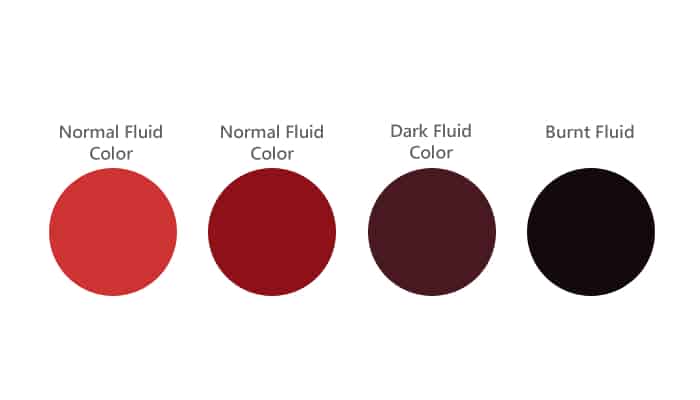Understanding Transmission Fluid for Your Ford Windstar
When it comes to maintaining your 1997 Ford Windstar, one of the most critical aspects is ensuring you have the right transmission fluid. The transmission fluid plays a vital role in the overall performance and longevity of your vehicle’s transmission system. Let’s break down what you need to know about the type of transmission fluid recommended by the manufacturer.
Manufacturer’s Recommendations
| Popular posts |
|---|
| What to do to prolong the life of your manual gearbox |
| Automatic transmission: what it is, how it works |
Ford has specific guidelines for the type of transmission fluid that should be used in the 1997 Windstar. According to the manufacturer, the proper fluid is:
- Type: Mercon V Automatic Transmission Fluid
This is a synthetic blend fluid designed to provide superior performance in terms of temperature stability, oxidation resistance, and overall lubrication. Using the correct fluid is crucial for maintaining the efficiency and reliability of your transmission.
Specifications of Mercon V Fluid
To ensure you’re using the right fluid, here are some key specifications of Mercon V:
- Viscosity: Typically, Mercon V has a viscosity rating of 7.5 cSt at 100°C.
- Color: Usually, this fluid is red in color, making it easier to identify leaks.
- Compatibility: Mercon V is backward compatible with Mercon and can be used in applications that specify Mercon.
Why Use the Recommended Fluid?
Using the manufacturer-recommended transmission fluid is not just a suggestion; it’s essential for several reasons:
- Performance: Mercon V is formulated to meet the specific needs of the Ford transmission, ensuring smooth shifting and optimal performance.
- Protection: This fluid provides excellent protection against wear and tear, which can extend the life of your transmission.
- Warranty Compliance: Using the correct fluid helps maintain your vehicle’s warranty, should any transmission issues arise.
Where to Find Mercon V Fluid
You can find Mercon V fluid at most auto parts stores, as well as online retailers. It’s also worth checking with your local Ford dealership, as they will carry the OEM version of the fluid, ensuring you’re getting exactly what your Windstar needs.
Final Thoughts
In summary, using the correct transmission fluid is crucial for the health of your 1997 Ford Windstar. Stick with Mercon V to ensure your transmission operates smoothly and efficiently. Remember, the right fluid can make all the difference in the long run.
Recommended Oil Brands for Your Ford Windstar Transmission Fluid
When it comes to keeping your 1997 Ford Windstar running smoothly, choosing the right transmission fluid is essential. While the manufacturer recommends Mercon V, there are several brands that have garnered positive feedback from owners and mechanics alike. Let’s dive into some of the most recommended oil brands based on real-world experiences shared in forums and owner feedback.
Top Brands for Mercon V Transmission Fluid
Here are some of the most trusted brands that produce Mercon V transmission fluid, as discussed by Windstar owners:
- Motorcraft
- As the OEM supplier for Ford, Motorcraft Mercon V is often the go-to choice for many owners. It’s specifically formulated for Ford transmissions, ensuring compatibility and performance.
- Valvoline
- Valvoline’s Mercon V fluid is well-regarded for its high-quality formulation. Many users report smoother shifting and improved performance after switching to Valvoline.
- Castrol
- Castrol’s Transmax Mercon V fluid has received positive reviews for its ability to withstand high temperatures and maintain performance. Owners appreciate its reliability in various driving conditions.
- Royal Purple
- Known for its high-performance lubricants, Royal Purple offers a synthetic Mercon V fluid that many users swear by. It’s often praised for enhancing shifting responsiveness and overall transmission efficiency.
- Amsoil
- Amsoil is another premium brand that offers a synthetic Mercon V fluid. Users have reported longer intervals between changes and improved fuel efficiency, making it a popular choice among enthusiasts.
Owner Feedback and Experiences
Many Ford Windstar owners have shared their experiences on online forums, discussing the pros and cons of various brands. Here’s a summary of what they have to say:
- Motorcraft:
- Many owners recommend sticking with Motorcraft for peace of mind, especially if you want to maintain warranty compliance.
- Users often report that it provides the best overall performance and longevity for their transmissions.
- Valvoline:
- Several users have noted that switching to Valvoline resulted in noticeable improvements in shifting quality.
- It’s often highlighted for its affordability without sacrificing quality.
- Castrol:
- Owners have praised Castrol for its ability to handle extreme temperatures, especially in hot climates.
- Many users report fewer transmission issues after making the switch.
- Royal Purple:
- Royal Purple users often rave about the enhanced performance and smoother shifts.
- Some owners have noted that it can be pricier, but many feel it’s worth the investment for the performance boost.
- Amsoil:
- Amsoil is frequently mentioned in discussions about high-mileage vehicles, with many owners reporting better performance and less wear.
- Users appreciate the extended change intervals, which can save money in the long run.
What to Consider When Choosing a Brand
When selecting a transmission fluid brand for your Windstar, consider the following factors based on owner feedback:
- Price: While premium brands may offer enhanced performance, budget-friendly options like Valvoline can still provide excellent results.
- Availability: Make sure the brand you choose is readily available at local auto parts stores or online.
- Reviews: Always check user reviews and experiences to gauge the effectiveness of the fluid in real-world conditions.
- Compatibility: Ensure that the fluid meets the Mercon V specification to avoid any compatibility issues.
Choosing the right transmission fluid brand for your 1997 Ford Windstar can significantly impact its performance and longevity. By considering the experiences of other owners and sticking with reputable brands, you can make an informed decision that keeps your vehicle running smoothly.
Change Interval for Your Ford Windstar Transmission Fluid
Keeping your 1997 Ford Windstar’s transmission fluid fresh is essential for the health of your vehicle. The change interval for transmission fluid can vary based on driving conditions, but general recommendations provide a good baseline for maintenance.
Recommended Change Interval
For the 1997 Ford Windstar, the typical recommendation for changing the transmission fluid is:
- Every 30,000 to 60,000 miles (48,000 to 96,000 km) under normal driving conditions.
- Every 15,000 to 30,000 miles (24,000 to 48,000 km) if you frequently drive in severe conditions, such as heavy traffic, towing, or extreme temperatures.
These intervals are based on manufacturer guidelines and are supported by various automotive maintenance resources. Regularly changing your transmission fluid helps prevent wear and tear, ensuring that your transmission operates smoothly.
Partial Transmission Oil Changes
One important aspect of transmission maintenance is understanding the difference between full and partial oil changes. In many cases, a complete fluid change requires removing the transmission from the vehicle, which is not always practical. Here’s what you need to know about partial transmission oil changes:
What is a Partial Oil Change?
A partial transmission oil change involves draining a portion of the old fluid and replacing it with fresh fluid. This method is often more accessible and less labor-intensive than a full fluid change.
Benefits of Partial Oil Changes
- Cost-Effective: Partial changes are generally less expensive since they require less labor and time.
- Frequent Maintenance: You can perform partial changes more regularly, which helps maintain fluid quality and transmission health.
- Less Downtime: Since you don’t need to remove the transmission, your vehicle spends less time in the shop.
Statistical Support
According to the American Transmission Rebuilders Association (ATRA), regular maintenance, including partial fluid changes, can significantly extend the life of your transmission. They report that many transmission failures can be traced back to neglected fluid changes.
A study conducted by the National Institute for Automotive Service Excellence (ASE) found that vehicles that underwent regular fluid changes—whether full or partial—had a 30% lower failure rate compared to those that did not maintain their fluid levels. This statistic highlights the importance of keeping the transmission fluid fresh, regardless of the method used.
How to Perform a Partial Change
If you decide to perform a partial transmission fluid change, here’s a basic outline of the process:
- Warm up the vehicle slightly to thin the fluid, making it easier to drain.
- Locate the transmission fluid pan and drain plug.
- Drain approximately 3 to 4 quarts of fluid, depending on your transmission’s design.
- Replace the drain plug and refill with fresh Mercon V fluid through the fill port.
- Start the engine and let it run for a few minutes, checking for leaks and ensuring proper fluid levels.
While a partial change won’t completely remove old fluid, it can help maintain a healthier transmission environment, especially when done regularly.
What Color Should Transmission Fluid Be?


